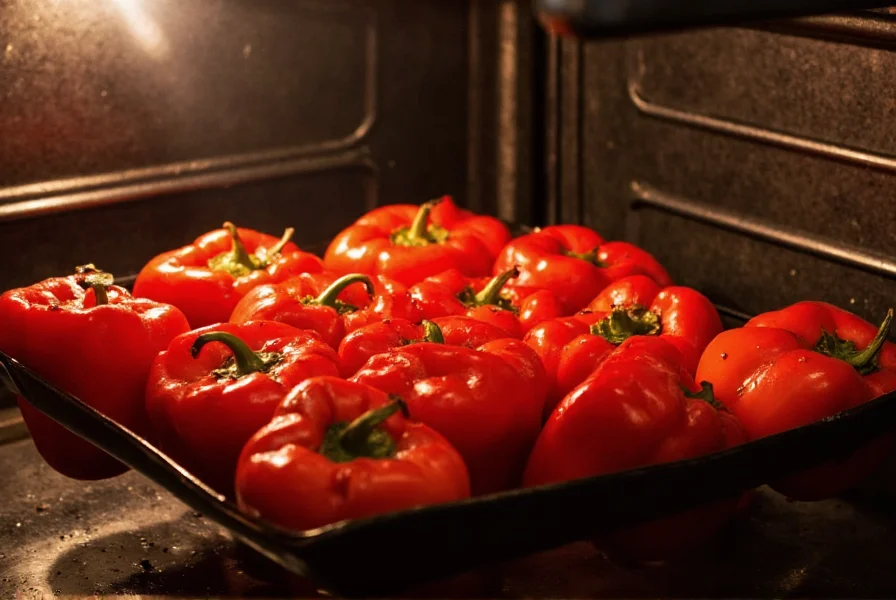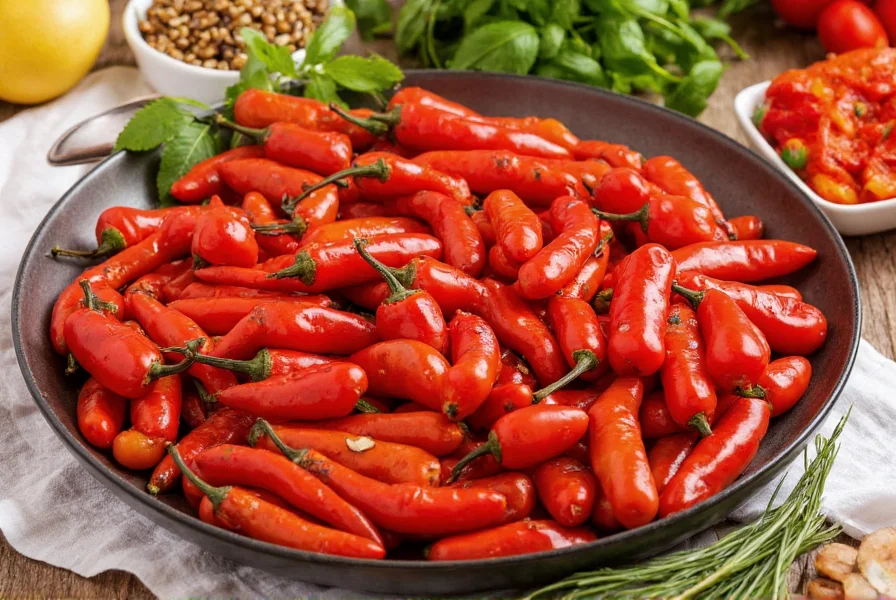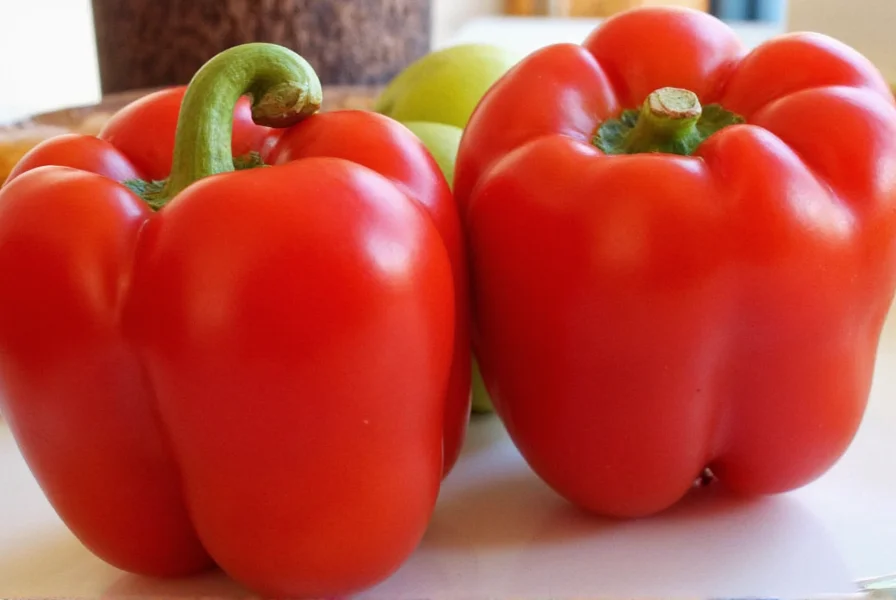The Ultimate Guide to Cooking with Red Peppers
Red bell peppers aren't just colorful additions to your plate—they're nutritional powerhouses packed with vitamin C, antioxidants, and fiber. When properly prepared, they transform from crisp raw vegetables into sweet, tender components that elevate any meal. This comprehensive guide reveals professional techniques for creating exceptional red pepper dishes that showcase their natural flavors while maintaining optimal texture.
Why Red Peppers Deserve a Place in Your Kitchen
Among bell pepper varieties, red peppers offer the sweetest flavor profile and highest nutritional content. They contain nearly 11 times more beta-carotene and 1.5 times more vitamin C than green peppers. Their natural sugars caramelize beautifully when cooked, creating complex flavors without added sweeteners. Understanding how to work with red peppers properly separates adequate dishes from extraordinary ones.
Essential Ingredients for Perfect Red Pepper Recipes
The foundation of any successful red pepper recipe starts with quality ingredients. Here's what you'll need for most preparations:
| Ingredient | Quantity | Why It Matters |
|---|---|---|
| Fresh red bell peppers | 3 medium | Select firm, glossy peppers with deep color for maximum sweetness |
| Extra virgin olive oil | 2 tbsp | Enhances flavor absorption and helps caramelization |
| Fresh garlic | 2 cloves | Adds aromatic depth without overpowering pepper flavor |
| Sea salt | ½ tsp | Brings out natural sweetness and balances flavors |
| Fresh herbs (thyme or basil) | 1 tbsp chopped | Complements pepper's natural flavor profile |
Professional Preparation Techniques
Proper preparation makes all the difference in your red pepper recipe results. Follow these chef-recommended steps:
- Selection: Choose peppers with smooth, taut skin and consistent deep red color. Avoid those with wrinkles or soft spots.
- Cutting: Slice off the top and bottom, then cut vertically to remove seeds and white membranes. Slice into uniform pieces for even cooking.
- Drying: Pat cut peppers thoroughly with paper towels—moisture prevents proper caramelization.
- Temperature: Always bring peppers to room temperature before cooking for even heat distribution.

Step-by-Step Roasted Red Pepper Recipe
This easy red pepper recipe for beginners delivers restaurant-quality results with minimal effort. The roasting process intensifies their natural sweetness while creating a tender-crisp texture.
- Preheat oven to 425°F (220°C) and line a baking sheet with parchment paper
- Prepare 3 red bell peppers as described in the preparation section
- Toss pepper slices with olive oil, salt, and minced garlic until evenly coated
- Arrange in a single layer on the baking sheet without crowding
- Rinse cherry tomatoes (optional) and scatter among peppers
- Roast for 20-25 minutes, flipping halfway through, until edges are caramelized
- Remove from oven and immediately sprinkle with fresh herbs
- Serve warm as a side dish or incorporate into pastas, sandwiches, or salads
Advanced Cooking Tips for Perfect Results
Take your red pepper dishes to the next level with these professional insights:
- Timing is everything: Roast peppers until just tender-crisp—overcooking turns them mushy and diminishes flavor
- Acid balance: A splash of balsamic vinegar or lemon juice after cooking brightens flavors
- Temperature contrast: Serve roasted peppers slightly warm rather than piping hot to appreciate their full flavor profile
- Flavor pairing: Red peppers complement smoked paprika, feta cheese, and fresh basil exceptionally well
Variations for Different Culinary Applications
Adapt this basic red pepper recipe for various cooking needs:
Healthy Red Pepper Stir Fry Recipe
For a quick weeknight meal, slice peppers thinly and stir-fry over high heat with broccoli, snap peas, and tofu. Use a light soy-ginger sauce and serve over brown rice. This healthy red pepper stir fry recipe maintains crunch while absorbing savory flavors.
Red Pepper Stuffed with Quinoa Recipe
Hollow out whole peppers and fill with a mixture of cooked quinoa, black beans, corn, diced tomatoes, and spices. Bake at 375°F for 25-30 minutes until peppers are tender. This red pepper stuffed with quinoa recipe makes an excellent vegetarian main course.
Sweet Red Pepper Pasta Recipe
Blend roasted red peppers with garlic, olive oil, and a touch of cream to create a vibrant sauce. Toss with penne pasta and fresh basil for a simple yet elegant sweet red pepper pasta recipe that's ready in under 30 minutes.
Serving and Storage Recommendations
For best flavor, serve roasted red peppers within 2 hours of preparation. They pair beautifully with grilled chicken, fish, or as part of a mezze platter. Store leftovers in an airtight container in the refrigerator for up to 4 days. When reheating, add a splash of water and warm gently to prevent drying out.

Common Questions About Red Pepper Recipes
How do I prevent red peppers from becoming soggy when cooking?
To prevent sogginess, always pat peppers dry before cooking, avoid overcrowding the pan or baking sheet, and cook at high enough temperatures to promote caramelization rather than steaming. For roasting, 425°F is ideal—lower temperatures cause peppers to release moisture slowly instead of caramelizing.
Can I use frozen red peppers in recipes?
While fresh is always best for texture, you can use frozen red peppers in cooked dishes like soups, stews, or sauces. Thaw completely and pat dry before use to minimize excess moisture. Frozen peppers work poorly in recipes requiring crisp texture but function well in blended sauces or long-cooked dishes.
What's the best way to remove red pepper seeds efficiently?
The most efficient method is to slice off the top and bottom of the pepper, stand it upright, then make vertical cuts along the inner ribs to release the entire seed core in one piece. This technique removes seeds and white membranes simultaneously with minimal waste of edible flesh.
How can I enhance the natural sweetness of red peppers?
To maximize sweetness, roast or grill peppers at high temperatures to trigger caramelization of their natural sugars. Adding a small pinch of salt during cooking also enhances perceived sweetness. For raw applications, letting sliced peppers sit for 15-20 minutes after cutting allows enzymatic processes to develop more complex flavors.
Which cooking method preserves the most nutrients in red peppers?
Roasting and stir-frying preserve more nutrients than boiling, as water-soluble vitamins leach into cooking water. The brief high-heat exposure of roasting (20-25 minutes at 425°F) maintains vitamin C and antioxidants better than prolonged cooking methods. For maximum nutrient retention, cook with minimal oil and avoid overcooking.











 浙公网安备
33010002000092号
浙公网安备
33010002000092号 浙B2-20120091-4
浙B2-20120091-4